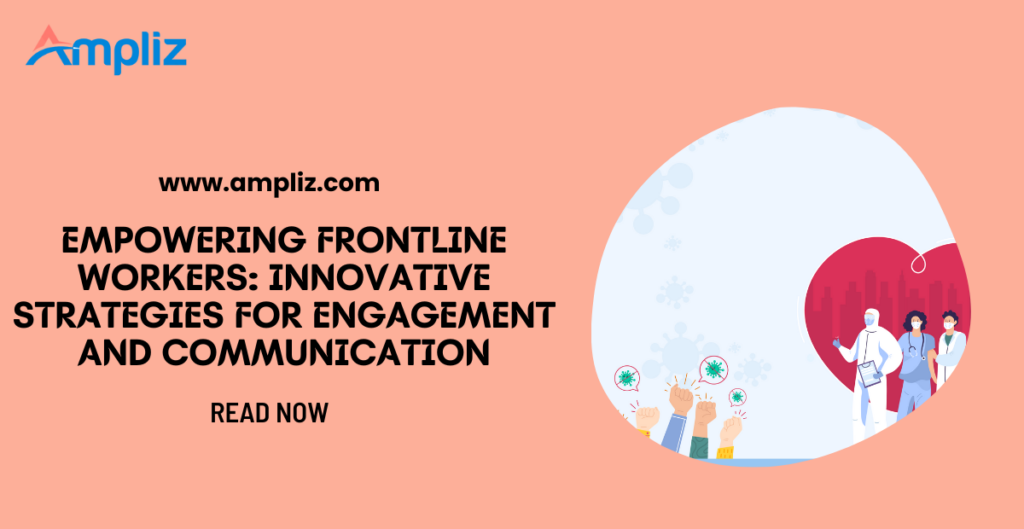Those who deal directly with consumers, clients, or end users of a product or service are referred to as frontline workers, frontline employees, or frontline staff. They represent the company and are essential to providing high-quality service, resolving problems, and upholding client satisfaction.
The roles of frontline workers can vary across industries but often include positions such as customer service representatives, sales associates, retail staff, healthcare professionals (such as nurses and medical assistants), hospitality workers, delivery drivers, and more.
Since they are frequently the initial point of contact for clients, these workers are in charge of making sure the encounter goes well.
Unique Characteristics of Frontline Work Environments
Frontline work environments are characterized by their dynamic and fast-paced nature, often involving high levels of interaction and unpredictability. Some key characteristics include:
High Customer Interaction
Frontline workers regularly engage with a diverse range of customers, each with unique needs, preferences, and personalities. This requires adaptability, empathy, and effective communication skills to navigate various situations successfully.
Time-Sensitive Tasks
Many frontline roles involve time-sensitive tasks, such as processing transactions, addressing customer inquiries, or providing urgent care in healthcare settings. This can create pressure to perform efficiently while maintaining quality standards.
On-the-spot Decision-making
Frontline workers often encounter unexpected challenges or customer issues that require quick decision-making and problem-solving skills. They must be empowered to make autonomous decisions within defined guidelines to resolve issues promptly and satisfactorily.
Physical Demands
Some frontline roles, such as those in healthcare, retail, or hospitality, may involve physical demands such as standing for long periods, lifting heavy objects, or navigating crowded spaces.
Importance of Effective Communication and Engagement for Frontline Workers
Effective communication and engagement are critical for frontline workers for several reasons:
Customer Satisfaction
Clear and timely communication with customers enhances their experience and satisfaction with the company’s products or services. Frontline workers who can effectively communicate information, address concerns, and provide assistance contribute to positive customer interactions and loyalty.
Employee Morale and Motivation
Frontline workers who feel valued, informed, and supported by their organization are more likely to be engaged and motivated in their roles. Regular communication from management, opportunities for feedback, and recognition for their contributions can boost morale and job satisfaction. Simple gestures like using employee rewards software to highlight daily efforts can go a long way in making frontline staff feel seen and appreciated.
Problem-solving and Collaboration
Strong communication channels facilitate collaboration among frontline workers and other departments within the organization. This enables swift problem-solving, knowledge sharing, and coordination to address customer needs and improve operational efficiency.
Risk Mitigation
Clear communication of policies, procedures, and safety protocols is essential for frontline workers to perform their duties safely and effectively. Effective communication can help mitigate risks, prevent misunderstandings, and ensure compliance with regulations and best practices.
Innovative Strategies: Utilizing Technology for Better Communication
Frontline employee apps are targeted applications for mobile devices created to improve teamwork, speed up communication, and empower frontline employees in different sectors.
With the help of these apps, frontline employees and management can communicate more without any problems and make sure that important information and resources are always available. Key features and benefits of frontline employee apps include:
Real-time Communication
Frontline employee app like iTacit enable instant and direct communication between frontline workers and management, regardless of their physical location. When seeking help, reporting problems, or sharing significant updates, staff members can easily get in touch with managers or other staff members by using chat or instant messaging features.
Centralized Information Hub
These apps serve as centralized platforms for storing and accessing essential information, documents, and resources relevant to frontline roles. From company policies and procedures to product information and training materials, frontline workers can easily access the information they need to perform their duties effectively.
Task Management and Workflow Automation
Frontline employee apps often include features for task management and workflow automation, allowing managers to assign tasks, track progress, and provide instructions to frontline teams efficiently. Through task lists, calendars, and notifications, employees can stay organized and prioritize their responsibilities effectively.
Workflow automation streamlines routine tasks and processes, freeing up frontline workers to focus on more value-added activities and customer interactions.
Training and Development
A lot of frontline employee apps have training and development features that give users access to tutorials, online courses, and educational materials to support their continued education and skill development.
These applications let businesses conduct training programs in an easy-to-use and accessible way, for everything from onboarding new hires to upskilling current staff members.
Feedback and Engagement
Frontline employee apps facilitate two-way communication and feedback exchange between frontline workers and management. Through features such as surveys, polls, and feedback forms, employees can share their thoughts, suggestions, and concerns with leadership, fostering a culture of open communication and continuous improvement.
Additionally, these apps may include features for employee recognition, allowing managers to acknowledge and reward exceptional performance, contributions, and achievements.
Frontline employee apps play a pivotal role in empowering frontline workers, improving communication and collaboration, and enhancing operational efficiency and customer satisfaction.
Creating a Culture of Feedback and Recognition
Regular check-ins and performance evaluations provide structured opportunities for managers to provide feedback, guidance, and support to frontline workers. Here are some key elements of effective check-ins and performance evaluations:
Clear Objectives
Before the meeting, both the manager and the employee should have a clear understanding of the objectives and agenda. This may include reviewing performance metrics, setting SMART (Specific, Measurable, Achievable, Relevant, Time-bound) goals, and identifying areas for improvement or development.
Two-way Dialogue
Check-ins and performance evaluations should be collaborative discussions rather than one-sided assessments. In addition to actively listening to the opinions, worries, and goals of their staff members, managers should also offer helpful objections and direction that is built on mutual respect and trust.
Actionable Feedback
Managers should provide specific, actionable feedback on performance, highlighting strengths, areas for improvement, and opportunities for growth. Feedback should be delivered in a constructive and supportive manner, focusing on behaviors and outcomes rather than personal attributes.
Development Planning
Check-ins and performance evaluations are opportunities to discuss career aspirations, skill development needs, and training opportunities. Together with employees, managers should design individualized development plans that meet both the needs of the company and their goals. They should also provide resources and support to help staff members advance their careers.
Regular Cadence
Check-ins and performance evaluations should be conducted regularly throughout the year, rather than as a one-time event. By establishing a consistent cadence, managers can provide timely feedback, track progress, and adjust goals and priorities as needed to ensure alignment with organizational objectives.
Conclusion
Frontline workers are the first point of contact for customers, representing the organization and shaping customers’ perceptions through their interactions. Their ability to provide excellent service, address inquiries, and resolve issues directly impacts customer satisfaction and retention
Frontline workers often receive a high volume of communication from various channels, such as emails, memos, and meetings, making it challenging to prioritize and digest relevant information. This content reads as if it is human-written.
This communication overload can lead to information overload and fatigue, hindering effective communication and decision-making. However, with the strategies discussed in this post, frontline workers will be empowered with efficient engagement and communication.




